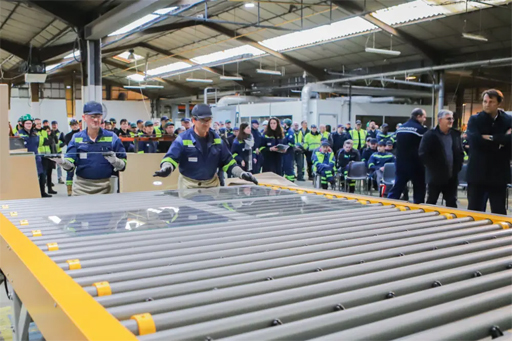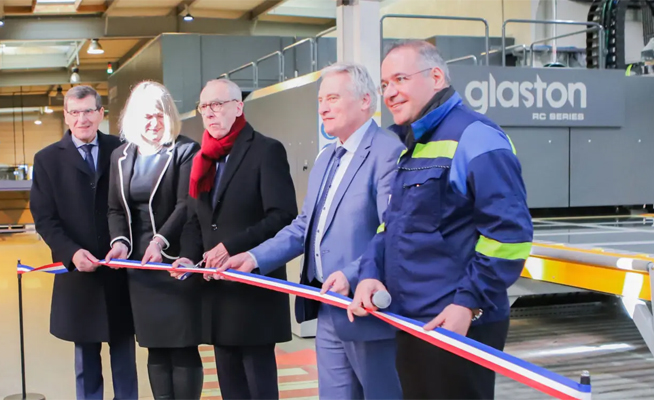“We had an excellent opportunity to replace our two older tempering furnaces with one new Glaston RC Series line to reduce energy consumption, avoid problems with outdated spare parts and beef up our production with more automation,” said Samir Bou Obeid, Chairman of AURYS.

AURYS is one of Europe’s leading processors of decorative glass products for interior design and the only mirror manufacturer in France. The Normandy, France-based company celebrated its 50th anniversary in 2022 but only became a fully independent, family-owned business in 2021 with the tagline of “Uplift interiors by glass.” Today, the company exports to 18 countries, including unique aged mirrors to Japan and the US.
When the company expanded into colour-lacquered glass and tempering, it purchased its first Tamglass, now Glaston, furnace in 1989 to temper thin 3 mm glass. Another tempering line brand for thicker glass of 4–12 mm was also acquired later.
“In March 2022, we decided to refurbish our tempering process. We also realized we could apply for funding for the investment from the France Relance recovery plan,” said Samir Bou Obeid. This program aims to revive French industry by significantly speeding up the ecological transition, enabling France to become Europe’s first major decarbonized economy by 2050. “We felt if we could cover our tempering needs with one furnace, we could save substantially on energy costs,” he said. “With two furnaces, there is the stop-and-go time, which wastes a lot of energy.”
The company’s goals were to reduce energy consumption, rationalize its production setup and eliminate spare part problems. Investing in a state-of-the-art furnace would also beef up the company’s Industry 4.0 roadmap by digitalizing production.
AURYS considered both Glaston’s RC Series and FC Series lines. But according to the company’s process manager, the choice came down to the precise ability to temper 2.85 mm glass – not just 3 mm – and the RC Series could do that. “Glaston’s FC Series suits coated glass best. And our French market prefers raw glass with screen printing, which the RC Series can handle better,” Obeid added. “The RC also processes a wide range of small glass sheets as well as thicker glass.”
Obeid and his team also appreciate the digitalization advantages of the new furnace. “It is a relief that our manufacturing can be monitored remotely from Tampere, Finland. In the good old days, technicians would be sent to the site, and that took time. Now, advanced capacities using artificial intelligence give us more support.”
Running a tempering line no longer varies with the human factor, where the morning shift operator might run the machine differently than the evening shift operator. Automation ensures a standardized approach. It’s a solid baseline from which AURYS hopes to continue to develop – perhaps even with Glaston’s Autopilot in the future.




